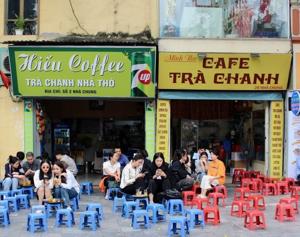My first evening in Hanoi draws me to Café Dinh, which, despite its neon sign, is barely noticeable. It’s tucked away above a popular ice cream parlour, overlooking Hoan Kiem Lake and the throngs of motorbikes and pedestrians circling it at all hours. Coffee is as much a part of Vietnam’s culture as its sacred temples and turbulent history, and on this trip I’m determined to learn why.
That journey starts with visiting some of the myriad cafés that spill out onto the streets and fill every corner — from modern, Western-style coffee shops to the more rustic, traditional ones like Café Dinh. Inside the humble space, outfitted with low wooden tables, stools, and vintage black-and-white family photos, I order a cup of , a classic robusta-bean hot black coffee with condensed milk. As in most traditional cafés, my barista places the coffee grounds inside a phin, a single-serving Vietnamese press that sits on the cup.

Hot water is poured over top, allowing the essence of the beans to soak as it drips slowly into the cup. Cà phê sua nóng, a classic robusta-bean hot black coffee with condensed milk, at Café Dinh. My first sip of the thick, concentrated robusta is like swallowing a bolt of lightning, balanced by the sweet rush of condensed milk.
This isn’t the mellow and bright arabica I know and appreciate at home; it’s bitter, untamed and invigorating. It’s my first taste of just how distinctive Vietnamese coffee culture can be. To understand its origin .























